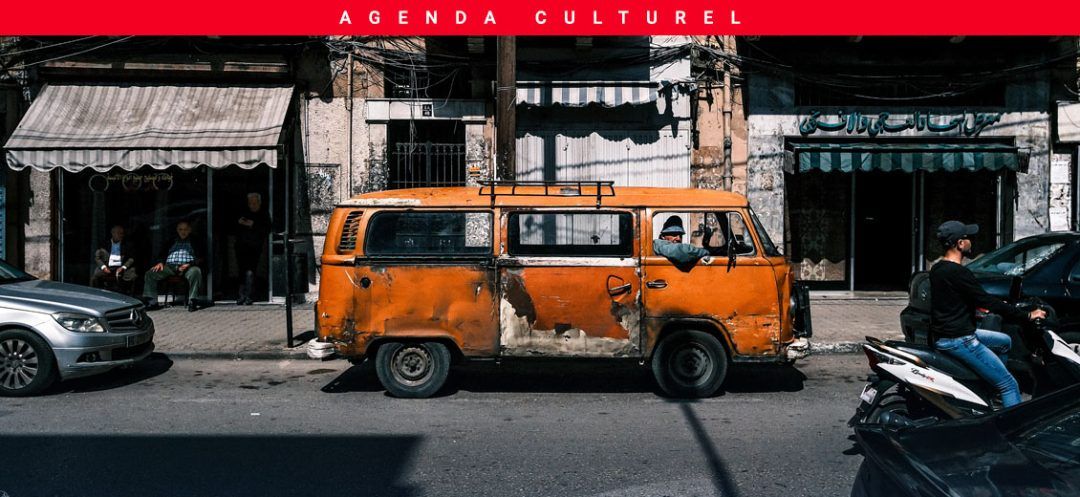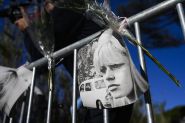
Through his exhibition "@BEIRUT_STREETS," Karim Sakr offers an authentic look at the city of Beirut and its inhabitants. The French Institute of Lebanon has given him carte blanche as part of the "Grand Weekend of French Cinema," providing the public with a unique opportunity to explore his photographic world from May 30 to June 30.
Known for his striking images of the streets of Beirut and other Lebanese regions, Karim Sakr captures moments that tell the story of his country. His works, selected to illustrate the event’s poster, reflect the beauty and complexity of everyday life in Lebanon.
The artist explains, "In this exhibition, I have chosen to present street photographs, as well as shots that highlight local architecture and cuisine. Additionally, I intend to introduce panoramas of Beirut to subtly illustrate the divisions between neighborhoods. For example, I will highlight the separation between Bourj Hammoud and Nabaa with a bridge that connects Achrafieh to the industrial city. South of this bridge lies Nabaa, a neighborhood mainly inhabited by refugees and the generally disadvantaged, while north of the bridge is Bourj Hammoud, primarily home to the Armenian community. I have decided to present these contrasts in the form of diptychs."
A graduate of Saint Joseph University, Karim Sakr went through a challenging period at the beginning of his studies due to a significant loss of vision. During his recovery, he discovered his passion for photography. "My first photos were taken in the streets or from a car, and it was then that I began to perceive these contrasts. Through research, I realized that these disparities emerged after the implementation of the 1954 Master Plan for Beirut," he shares.
[gallery size="large" ids="264242,264243,264244"]
An autodidact at heart, he combined his biology studies with learning photography, becoming a freelance photographer in 2013. "In 2018, I made the definitive decision to leave the field of engineering, but I have been dedicated to photography since 2015," he explains. He is also an urban guide, sharing his passion for Beirut with curious visitors.
With his diptychs, Karim Sakr highlights the physical and symbolic barriers dividing the neighborhoods of Beirut, offering a profound reflection on the social and historical implications of urban planning in the city. The location of the French Institute, situated on a former demarcation line of the civil war, adds an additional dimension to his work, underscoring the historical divisions of the city.
"The roads and major infrastructures that were supposed to connect communities have instead distanced them through space," emphasizes Karim. "This is the first time I am discussing this topic in an exhibition. We notice that the city is not made to move from one neighborhood to another. These are multitudes of interesting subjects that highlight communal and sectarian differences."
"@BEIRUT_STREETS" immerses viewers in the vibrant streets of Beirut through the lens of Karim Sakr. https://www.agendaculturel.com/articles/beyrouth-a-travers-lobjectif-de-karim-sakr
Known for his striking images of the streets of Beirut and other Lebanese regions, Karim Sakr captures moments that tell the story of his country. His works, selected to illustrate the event’s poster, reflect the beauty and complexity of everyday life in Lebanon.
The artist explains, "In this exhibition, I have chosen to present street photographs, as well as shots that highlight local architecture and cuisine. Additionally, I intend to introduce panoramas of Beirut to subtly illustrate the divisions between neighborhoods. For example, I will highlight the separation between Bourj Hammoud and Nabaa with a bridge that connects Achrafieh to the industrial city. South of this bridge lies Nabaa, a neighborhood mainly inhabited by refugees and the generally disadvantaged, while north of the bridge is Bourj Hammoud, primarily home to the Armenian community. I have decided to present these contrasts in the form of diptychs."
A graduate of Saint Joseph University, Karim Sakr went through a challenging period at the beginning of his studies due to a significant loss of vision. During his recovery, he discovered his passion for photography. "My first photos were taken in the streets or from a car, and it was then that I began to perceive these contrasts. Through research, I realized that these disparities emerged after the implementation of the 1954 Master Plan for Beirut," he shares.
[gallery size="large" ids="264242,264243,264244"]
An autodidact at heart, he combined his biology studies with learning photography, becoming a freelance photographer in 2013. "In 2018, I made the definitive decision to leave the field of engineering, but I have been dedicated to photography since 2015," he explains. He is also an urban guide, sharing his passion for Beirut with curious visitors.
With his diptychs, Karim Sakr highlights the physical and symbolic barriers dividing the neighborhoods of Beirut, offering a profound reflection on the social and historical implications of urban planning in the city. The location of the French Institute, situated on a former demarcation line of the civil war, adds an additional dimension to his work, underscoring the historical divisions of the city.
"The roads and major infrastructures that were supposed to connect communities have instead distanced them through space," emphasizes Karim. "This is the first time I am discussing this topic in an exhibition. We notice that the city is not made to move from one neighborhood to another. These are multitudes of interesting subjects that highlight communal and sectarian differences."
"@BEIRUT_STREETS" immerses viewers in the vibrant streets of Beirut through the lens of Karim Sakr. https://www.agendaculturel.com/articles/beyrouth-a-travers-lobjectif-de-karim-sakr
Read more



Comments